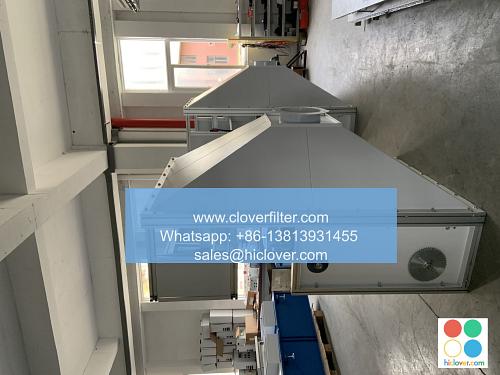How to Check the MERV Rating of Your Air Filter

As a homeowner or facility manager, ensuring good indoor air quality is crucial for the health and comfort of occupants. One key component in achieving this is the air filter, which captures airborne particles and pollutants. The Minimum Efficiency Reporting Value (MERV) rating is a measure of an air filter’s ability to remove particles from the air. In this article, we will walk you through the process of checking the MERV rating of your air filter and explore its significance in various application areas, including residential HVAC systems, commercial air filtration systems, and industrial air quality control.
What is a MERV Rating?
The MERV rating is a standardized system developed by the American Society of Heating, Refrigerating, and Air-Conditioning Engineers (ASHRAE) to rate the efficiency of air filters. It ranges from 1 to 20, with higher ratings indicating better filtration capabilities. The MERV rating takes into account the filter’s ability to capture particles of different sizes, including dust, pollen, mold spores, bacteria, and viruses.
How to Check the MERV Rating of Your Air Filter
Checking the MERV rating of your air filter is a straightforward process. Here are the steps to follow:
- Locate the Air Filter: Find the air filter in your air conditioning unit, furnace, or air handler.
- Check the Filter Label: Look for the filter’s label or packaging, which should display the MERV rating.
- Consult the Manufacturer’s Documentation: If the MERV rating is not clearly indicated on the label, refer to the manufacturer’s documentation or website for more information.
- Compare with Recommended Ratings: Compare the MERV rating of your air filter with the recommended ratings for your specific application area. For example, residential HVAC systems typically require a MERV 11 or higher rating, while commercial air filtration systems may require a MERV 13 or higher rating.
- Residential HVAC Systems: A higher MERV rating can improve indoor air quality, reduce allergy symptoms, and protect heating and cooling equipment from damage.
- Commercial Air Filtration Systems: A MERV 13 or higher rating is often required to maintain good indoor air quality and prevent the spread of illnesses in commercial buildings, such as office buildings, schools, and hospitals.
- Industrial Air Quality Control: In industrial settings, a higher MERV rating can help control airborne contaminants, such as chemical fumes and particulate matter, to ensure a safe working environment.
Importance of MERV Ratings in Various Application Areas
The MERV rating has significant implications in various application areas, including:
Conclusion
In conclusion, checking the MERV rating of your air filter is essential to ensure good indoor air quality and protect the health and comfort of occupants. By following the steps outlined in this article, you can determine the MERV rating of your air filter and compare it with recommended ratings for your specific application area. Remember to consider factors such as filter maintenance, replacement schedules, and compatibility with your HVAC system to optimize the performance of your air filter and maintain a healthy indoor environment.
It seems like you forgot to include the prompt. Please go ahead and provide the prompt or topic you’d like to discuss, and I’ll be happy to assist you!


